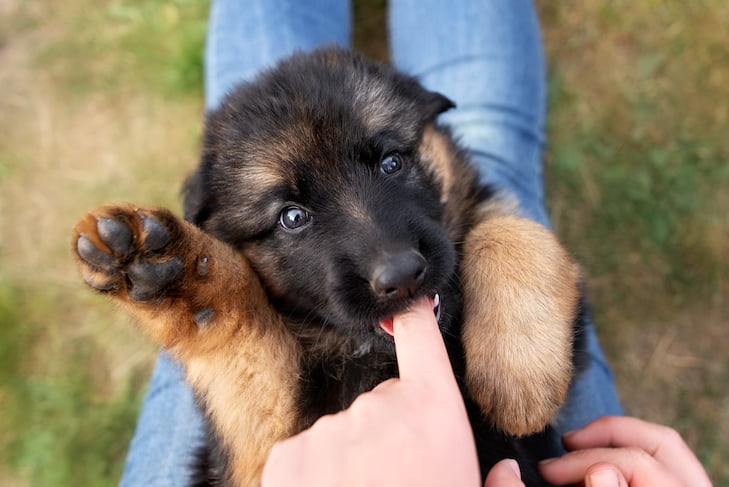Table of Contents
Biting is a common issue that many dog owners face, and it can lead to serious problems if not addressed promptly. Understanding how to stop a dog from biting is essential for the safety of both the dog and those around it. In this article, we explore 10 effective strategies to stop a dog from biting and ensure your pet is well-behaved and safe.

Understand the Reasons Behind Biting
Dogs bite for various reasons, including fear, pain, or playfulness. Identifying the root cause of the biting behavior is the first step in addressing it effectively. For more on understanding why dogs bite, visit ASPCA Dog Behavior Issues.
Provide Proper Socialization
Socializing your dog from a young age can help prevent biting behavior. Expose your dog to different people, environments, and other animals to reduce fear and anxiety. For tips on socialization, check out AKC Puppy Socialization.
Use Positive Reinforcement
Reward your dog for good behavior and use positive reinforcement techniques to encourage non-biting behaviors. Treats, praise, and playtime can be effective rewards. For more on positive reinforcement, see Humane Society Positive Training.
Teach Bite Inhibition
Bite inhibition is the process of teaching your dog to control the force of their bite. When your dog bites too hard during play, make a yelping sound and stop playing immediately. This helps them learn that biting hard ends playtime. For more on bite inhibition, visit PetMD Bite Inhibition.
Provide Chew Toys
Chew toys can help redirect your dog’s biting behavior away from people and towards appropriate items. Ensure the toys are safe and durable. For recommended chew toys, see The Spruce Pets Chew Toys.
Avoid Aggressive Play
Avoid games that encourage biting, such as tug-of-war or wrestling. These activities can reinforce biting behavior. Instead, engage in non-aggressive play like fetch or hide and seek. For more on appropriate play, visit Cesar’s Way Dog Play.
Seek Professional Help
If biting behavior persists despite your efforts, consider seeking help from a professional dog trainer or behaviorist. They can provide tailored advice and strategies to address the issue. For more on finding a professional, see APDT Find a Trainer.
Use Time-Outs
Implementing time-outs can help teach your dog that biting leads to a loss of attention and social interaction. When your dog bites, calmly remove them from the situation for a few minutes. For more on time-outs, visit AKC Puppy Discipline.
Monitor and Manage Interactions
Always supervise interactions between your dog and others, especially children. Intervene if you notice signs of aggression or discomfort. For more on safe interactions, see Cornell Safe Interactions.
Ensure Regular Exercise
Regular exercise can help reduce pent-up energy and frustration that may lead to biting. Provide your dog with plenty of physical and mental stimulation through walks, playtime, and training sessions. For exercise ideas, visit Petfinder Dog Exercise.
Conclusion
Learning how to stop a dog from biting is essential for ensuring a well-behaved and safe pet. By understanding the reasons behind biting, providing proper socialization, using positive reinforcement, and seeking professional help if needed, you can effectively address and prevent biting behavior. For more tips on dog behavior and training, check out our Dog Training Guide.
FAQs on How to Stop a Dog from Biting
Why does my dog bite during play?
Dogs often bite during play due to excitement or overstimulation. Teaching bite inhibition and redirecting their behavior with chew toys can help manage this.
Is it possible to completely stop a dog from biting?
While it’s difficult to eliminate biting entirely, consistent training and positive reinforcement can significantly reduce the behavior and teach your dog appropriate ways to interact.
Should I punish my dog for biting?
Punishment can increase fear and aggression, making the problem worse. Instead, use positive reinforcement to encourage non-biting behaviors and seek professional help if needed.
How can I safely introduce my dog to new people?
Introduce your dog to new people gradually and in a controlled environment. Use treats and praise to create positive associations and monitor interactions closely.
What are the signs that my dog is about to bite?
Signs that a dog may bite include growling, snapping, showing teeth, stiff body posture, and intense staring. If you notice these signs, remove your dog from the situation immediately.
Can professional training help stop my dog from biting?
Yes, professional trainers and behaviorists can provide personalized strategies and guidance to address biting behavior effectively.











